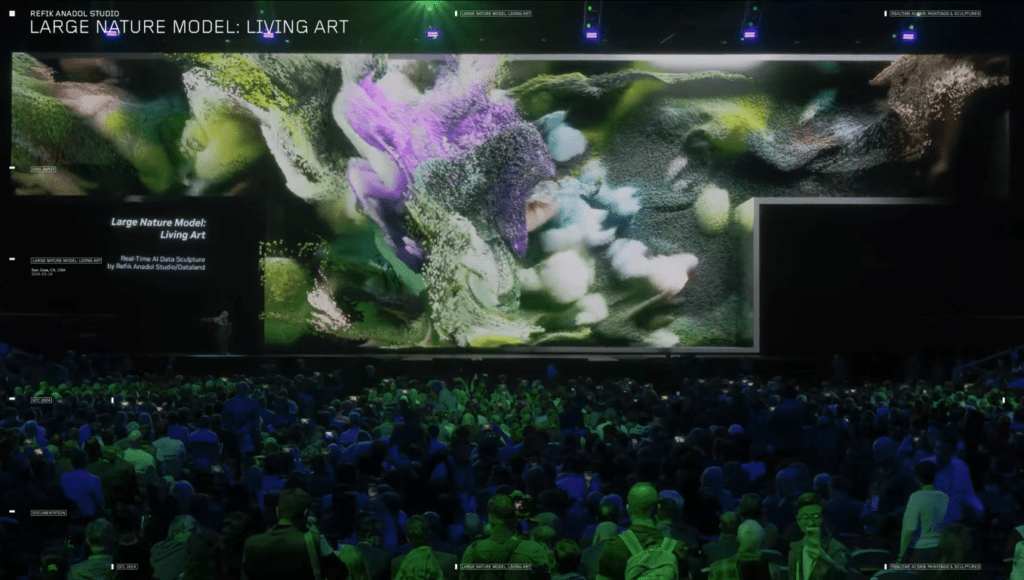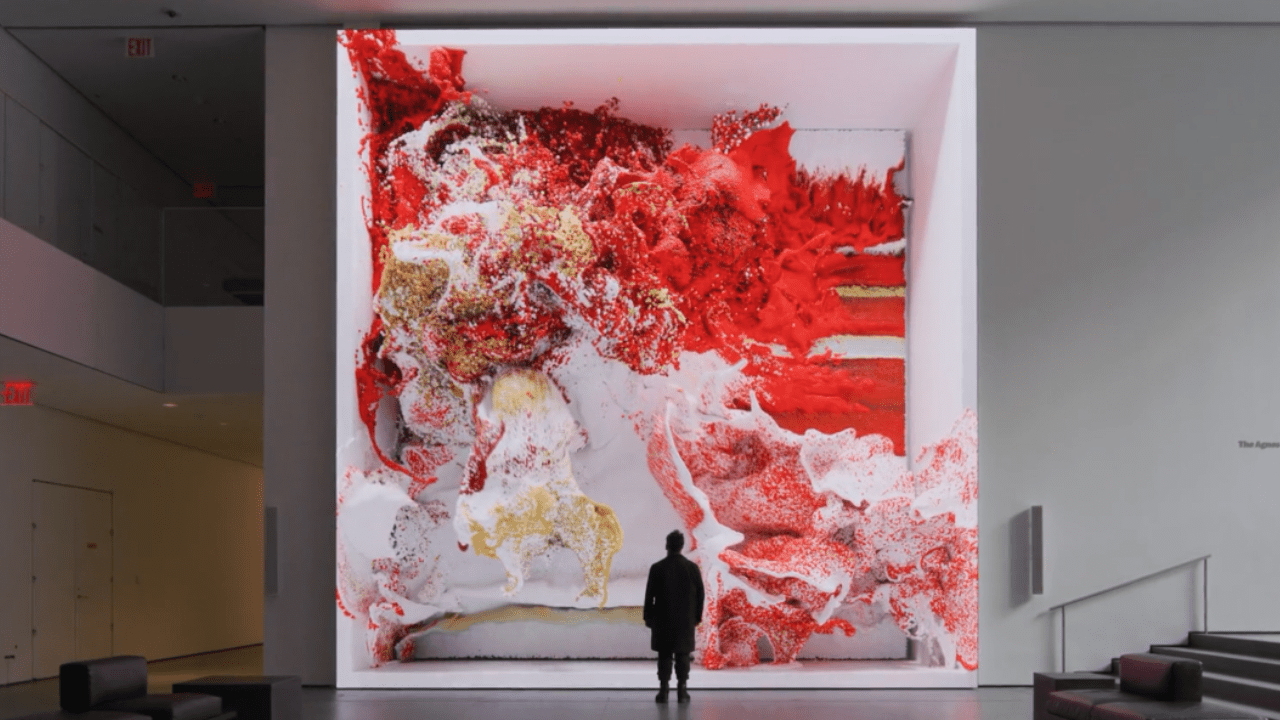Renowned machine intelligence artist Refik Anadol is opening the world’s first museum dedicated to AI-based creativity and data visualization works.
Called Dataland, it will be based at The Grand LA, which is a Frank Gehry-designed development in downtown Los Angeles. Opening in 2025, the museum will feature the works of pioneers in the arts, sciences, AI research and other cutting edge technologies.
The inaugural exhibition will be Anadol’s Large Nature Model, which takes data from nature and transforms it into a moving painting. The model is open source, fine-tuned from Meta’s Llama models.
Anadol is known for his work that takes data from digital archives and publicly available resources and processes these data sets with machine learning classification models. The result is a self-generating visual art that has been exhibited at New York’s Museum of Modern Art, Walt Disney Concert Hall, World Economic Forum, among other venues around the world.

Google’s NotebookLM gets an upgrade
Google’s NotebookLM – an AI tool that can turn documents into a two-speaker podcast, among other capabilities – just became more powerful.
As an AI research assistant that can parse through complex content and answer questions about it, NotebookLM now supports an even wider range of content types, making it more versatile for research, education, and team collaboration.
Users can now upload public YouTube URLs and audio files alongside PDFs, Google Docs, Slides, websites, and more. This expansion is driven by the multimodal capabilities of Gemini 1.5, Google’s most powerful AI model. By incorporating YouTube videos and audio files, users can now dive deeper into multimedia content for learning and analysis.
Here are some of its new capabilities:
- Analyzing videos and lectures: When users upload YouTube videos into NotebookLM, the tool can summarize key concepts and offer detailed exploration through inline citations linked to the video’s transcript. This makes it easy to compare various viewpoints on a topic or understand a lecture without needing to watch the entire video. Additionally, the embedded YouTube player allows users to view the video directly within the NotebookLM environment, streamlining the research process.
- Unlocking insights from audio: Teams working on complex projects can now add audio files and let NotebookLM search across transcriptions to locate specific details quickly. Instead of listening to long conversations, users can instantly extract crucial information, making projects more efficient and collaborative.
- Creating study guides: Students and educators can transform class recordings, notes, and lecture slides into detailed study guides with a single click. These guides compile essential information into an accessible format, perfect for exam preparation or reference material.
As for Audio Overviews, its podcast-creating capability, the team behind NotebookLM now gives users the ability to share these audio recordings. (For now, Workspace users cannot use the share feature.)
Microsoft to power data centers with nuclear energy
Microsoft signed a 20-year agreement with Constellation Energy, which runs the Three Mile Island nuclear plant, to tap nuclear power for its data centers.
Three Mile Island is the site of the 1979 partial nuclear meltdown, considered the most serious accident of its kind in U.S. history, according to the U.S. Nuclear Regulatory Commission. However, the small radioactive releases in Unit 2 “had no detectable health effects” on workers or the public, the agency said. Nevertheless, the incident led to tighter regulations for the industry.
Microsoft will be getting carbon-free energy from Unit 1, which is adjacent to Unit 2 but is a fully independent facility that was not affected by the meltdown. Constellation said Unit 1 had been operating at “industry-leading levels of safety and reliability for decades” before it was shut down for financial reasons five years ago.
Constellation said restarting the Unit 1 nuclear reactor will require “significant investments” to restore the plant, which includes the turbine, generator, main power transformer and cooling and control systems. Moreover, it requires approval from the U.S. Nuclear Regulatory Commission following a safety and environmental review and the granting of state and local permits.
The plant, called Crane Clean Energy Center, is expected to go online in 2028.
Microsoft follows in the footsteps of other tech companies including AWS, which also struck a deal with Constellation to tap nuclear energy for its data centers.
